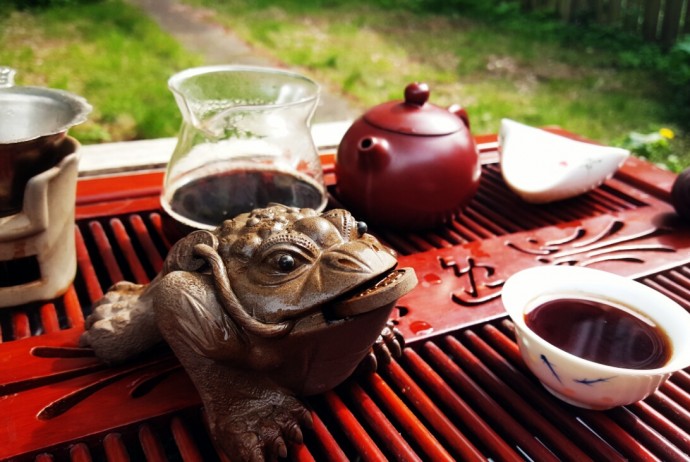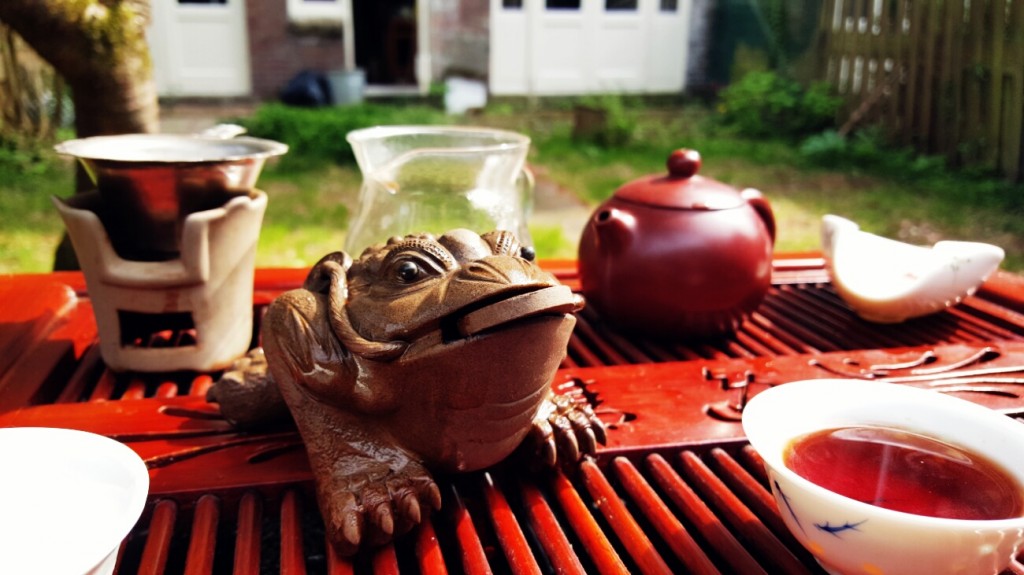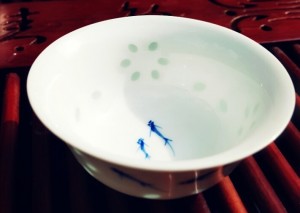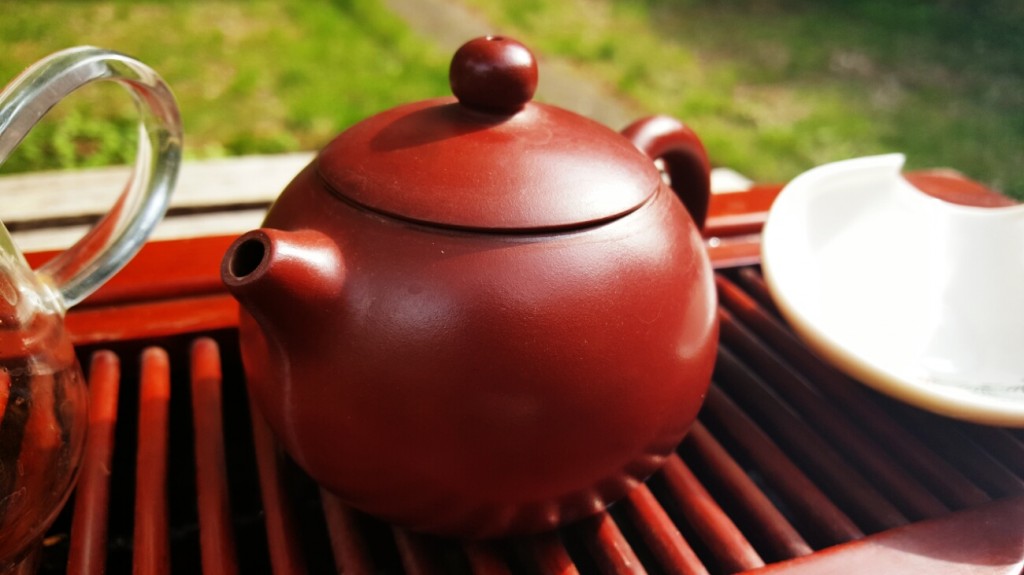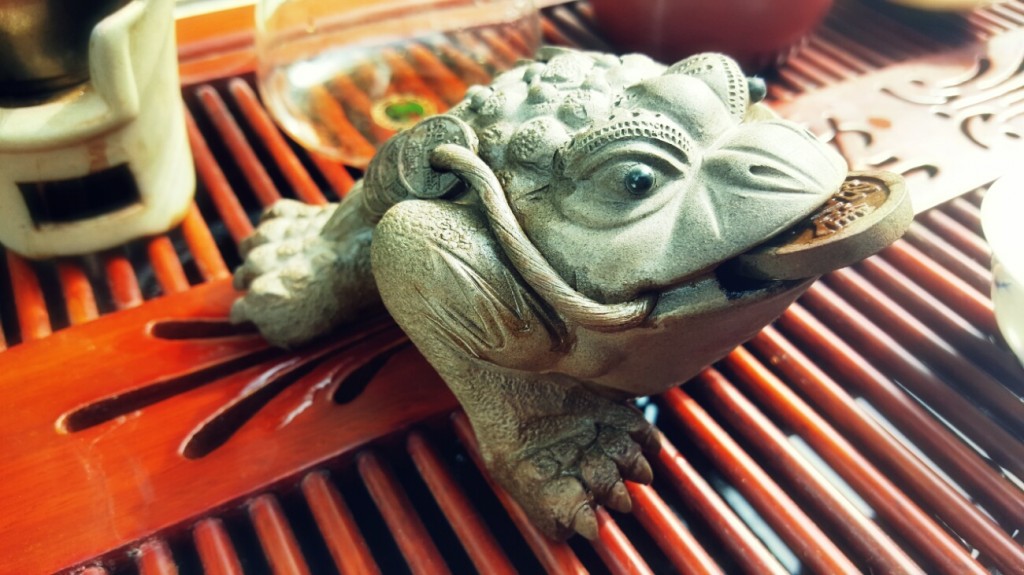Today it was the first day that the sun finally came out and actually produced a somewhat enjoyable temperature. Sitting in my garden, after my morning training session, I took out my Gōngfūchá tea set. The first time I learned of this special way of preparing and appreciating tea was with my first real gongfu teacher Mike Martello. This method is very popular within the gongfu circles where tea is also used in special ceremonial rites.
Of course not many people know of this art especially in the west. When we drink tea we often unintentionally throw a bag of tea in some boiling water to quickly drink the tea with our breakfast or so. The Chinese however appreciate tea the way we do wine and even a little bit beyond.
The Gōngfūchá method embodies the holistic view in a way. The tea varieties are numerous with well-known names as dragon well tea (green tea), Pu Erh, oolong, etc. Since good tea is very hard to find in Europe I personally order mine from ebay at this moment. Check out this shop if only to see how many different teas there are. http://stores.ebay.com/Dragon-Tea-House?_rdc=1
The tea is served on a leak trough tray because Gōngfūchá is done while rinsing and over pouring water a great deal of the time. The water is first brewed to the appropriate temperature, which is different for oolong or pu erh.
The tea is carefully inserted in the clay teapot. These teapots are often small and prices for old pots can easily go to 4000euro and higher. But to appreciate tea you don’t have to go that crazy. For 50 to 60 euro you’ll have a nice Yixing teapot. Yixing is a certain kind of clay used to make teapots. Of course also here there are different kinds of clay used to make pots. The tea is supposed to be absorbed slowly by the clay over a long period so you can know by the smell of the pot what tea is normally brewed in it. The clay also adds to the taste of the tea, that’s why you never ever wash a pot with soap. Keep your girlfriend away from your collection!! (joking) I personally use a different pot for every different tea.
After tea is brewed it has to be strained into a pitcher to clear away dust and impurities. The cups are often washed and there are different methods to do that according to the region. In Taiwan for example they don’t touch the tea glasses and they are washed holding them with tweezers. The cups are most of the time very small and good for 3 sips of teas. They are made of very thin porcelain so the tea is quickly drinkable.
On my tea tray you can also see a “Jin Chan” or golden toad which is a Yixing clay statue, resembling the golden toad a mytical figure, over which the excess tea is poured for good fortune and also to prevent the water from splashing when thrown away.
The time is takes to brew a tea is at the same time the pleasure of it. The whole focus is on the taste and the spectacle of color and form. This is a very Eastern idea. Don’t just rush into something but take the time to appreciate the whole process, with the drinking of the tea as the icing on the cake. Brewing like this is very soothing and forces one to calm down. If you have not drank real Chinese tea you certainly have to try it ones. The taste pallet is so much more complex than the teas we are used to; it’s a healthy experience.
If you want to know more about Gōngfūchá than here are some pages to look at:
http://en.wikipedia.org/wiki/Gongfu_tea_ceremony
and some different tea ceremony youtube movies
https://www.youtube.com/playlist?list=PL66530C510AE79AB3
Enjoy!
